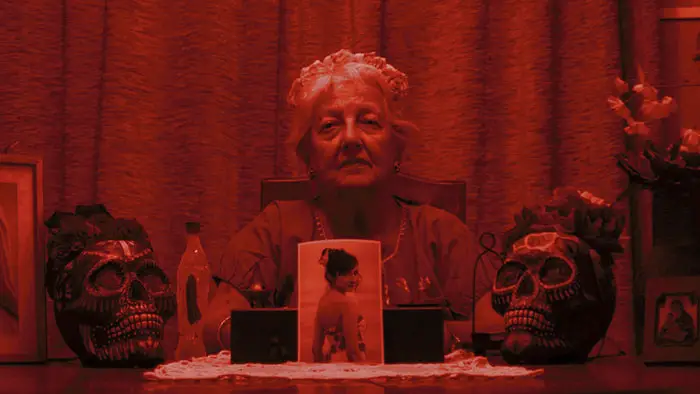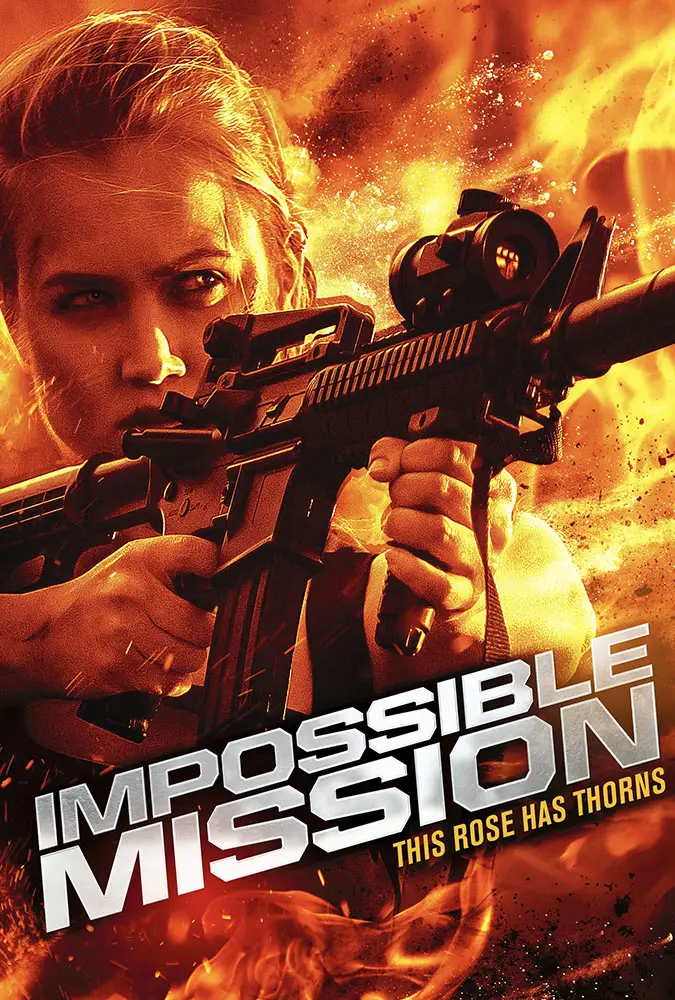
His direction of actors is appropriate to the material as well, the only over-the-top performance being Dermot Arrigan as the stereotypically spastic conspiracy theorist, Bernie Walson. Gala makes an effective femme fatale, albeit not one in the familiar blonde bombshell Hitchcock mode. Gambino highlights her dark features beautifully, and they serve to complement, along with her fashionista wardrobe, Gambino’s vivid color scheme. As Crawford, Giblin is suitably smarmy in that Mafioso kind of way, and Gambino himself turns up several times (surprise, though not a spoiler) as Franck, the strange guru who is the focus of all of this madness. Seen sporadically in his quasi-PSA’s, Gambino ratchets up Franck’s crazy cult leader vibe, and the result is an effectively creepy performance. Further standouts include Ben Vinnicombe as Will Gray, Rosa’s Barcelona contact-cum-lover, and Alika Del Sol as Francesca, Franck’s Parisian ex-wife.
But for all of Gambino’s talent for composition and style, his understanding of script structure and cinematic construction remain deficient. After a superb prologue in which we witness Rosa at work, the movie loses the momentum and intrigue promised in this opening. For one thing, Gambino shoots the majority of his character interactions as boring two-shots while both actors are seated, thereby denying any movement in the scene. Additionally, certain scenes are allowed to meander on the way too long, and in a movie barely reaching the 90-minute mark, this is akin to a death march. In one such scene, Rosa walks through an ostensibly vacant apartment for what seems like 20 minutes. Accompanying this scene, and pretty much every other scene in the movie is a perpetual ambient electronic score.

“…exposes himself…as a talented visualist to watch, his proficiency as a cinematic craftsman…”
Music in films is a useful tool for underlining certain scenes and for cueing an emotional response in the audience. But when used continually throughout a movie with hardly an interruption, a score can run the risk of losing much of its intended punch: the effect has the potential, as is, unfortunately, the case in Impossible Mission, to be much like being trapped in an elevator and unable to turn off the Muzak.
While Gambino exposes himself in Impossible Mission as a talented visualist to watch, his proficiency as a cinematic craftsman isn’t quite up to the same level, at least not yet. In addition to several jump cuts and an odd overreliance on close-ups, there is a tenuous connective thread among scenes in the narrative. Furthermore, some scenes involve characters that haven’t been properly introduced to the audience, and a few plot strands are introduced that are left unresolved.
The primary narrative crime committed by Impossible Mission is avoiding any real or urgent stake in the story. What are the actual consequences going to be as a result of Franck’s hijacking of the airwaves? An FAA fine? Gambino attempts to address issues of freedom of speech and urban terrorism, but the narrative, such as it is, simply cannot support the weight of these ideas, especially when placed within the framework of an aging assassin storyline. Impossible Mission is a stylish and well-acted wannabe John LeCarré adaptation, but inefficient plot mechanics sabotage its efforts.

"…attempts to address issues of freedom of speech and urban terrorism..."
